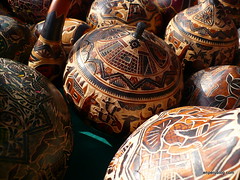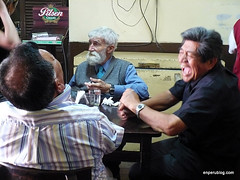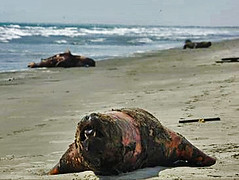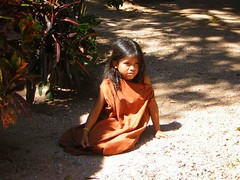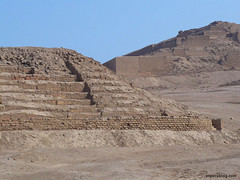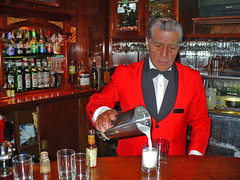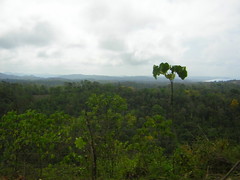It was an interesting but long journey. From the edge of Cajamarca we, along with 4 other strangers and a driver, squeezed into a colectivo taxi and headed on the 3 hour drive down the mountains to Chilete, a highway town that marks the crossroads between San Pablo in the north, Contumazá in the south, Chepén in the west and Cajamarca in the east.
Category: "Travel and Places"
Ventanillas of Cajamarca
It’s a cultural trait that existed in pre-columbian times all along the Andes to various extents. After carving out small holes in the sides of cliffs, ancient cultures would use them to bury their elite. In Cajamarca this was also done, leaving us with some of the best preserved cliff-face tombs in the country.
Carnival in Cajamarca
It’s carnival time in Cajamarca!!
…a period of song, dance and water fights. This carnival is known to be the most wild in the country and perhaps the second most famous on the continent after the one that takes place in Brazil. Whether a sunny day or not, dressing for rain would be a very good idea – expect to br drenched in buckets of water.
People of Cajamarca
The people of Cajamarca are as distinctive as any in Peru, with an individual culture, customs and typical dress.
Photos at end.
In the gallery accompanying this blog I will show some of the photos I have taken of the people in this region, urban and rural, going about their daily business. You may notice a particular distinctive aspect of the dress – the famous Cajamarca hat.
Cuarto del Rescate
It was in Cajamarca that the Inca empire started down its path to swift destruction. The newly arrived group of Spanish lead by Francisco Pizarro, aiming to conquer the Inca empire, arrived in Cajamarca to be met by Emperor Atahualpa and his army. After tricking him into entering the city with only a light guard they captured him, ransomed him and killed him.
Conjunto Monumental Belén
This group of historic buildings found on the street of Belén are constructed almost entirely out of volcanic stone. Construction began on these, the finest examples of colonial architecture in Cajamarca, in 1699, replacing old wooden churches and buildings. The complex includes a church and men’s and women’s hospitals.
Cumbe Mayo’s Mysteries
South west of Cajamarca is a site steeped in ancient mystery. A forest of towers of rock covered by a thick fog sets the scene for this place with features yet to be explained.
Cerro Santa Apolonia
Overlooking Cajamarca’s plaza is the Cerro Santa Apolonia, a 500 metre high hill that rises out of nothing in the centre of the city. Now merely a lookout point, it was once an important sacred spot for the many civilisations that inhabited the area over the ages, such as the Chavin, who in 1200BC built platforms, tunnels and tombs near and on the top of it.
Baños del Inca
They say that Inca Emperor Atahualpa was taking a well deserved rest on his way back to Cusco after a long journey from Quito and the recent defeat of his half brother in battle. While bathing he was disturbed by a messenger bringing word that strangers had arrived, these strangers were the Spanish.
Cajamarca
Set in the rolling green hills of the northern Peruvian Andes, Cajamarca is a land of history and tradition but also of carnival and music. The colonial city is a simpler, quieter and less commercialized version of Cusco, mostly free of tourism and all it brings, but with just as much to offer.
Ferreñafe
This small town, 18km from Chiclayo is known as the land of two faiths: Shamanism and Catholicism. How they so easily go hand in hand, I’ll let you figure out – but this is a common occurrence across all of Latin America. The town was founded in 1550 in its full name Santa Lucía de Ferreñafe, in a region with history more ancient still. This is shown when you enter town by an arch with Sicán adornments which if passed under eventually leads to the plaza, with its 150 year old Spanish fountain, and the Santa Lucía Church.
Chaparrí
Created when the people of Santa Catalina realised there was value in the preservation of natural habitats, and thanks to the work of Peruvian photographer Heinz Plenge, this huge reserve in Chongoyape, 60km from Chiclayo, is part of one of the largest remaining dry forests in the world.



